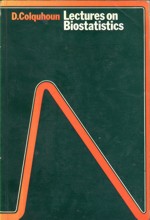This an essay by Alan Sokal, published in Archaeological Fantasies: How Pseudoarchaeology Misrepresents the Past and Misleads the Public, edited by Garrett G. Fagan (Routledge, 2006), pp. 286-361. It is available on-line.
This is a wonderful essay. It could hardly be more relevant to the Barry paper. It explains why so much of the philosophy science has moved so far in a relativist direction that it has become barely distinguishable from CAM and astrology, apart from the more pretentious language of the former. Little wonder that it is almost entirely ignored by scientists.
Here are some quotations.
| IntroductionIn this essay I propose to investigate the paradoxical relation between two broad categories of thought: pseudoscience and postmodernism (both will be defined more precisely in a moment). At first glance, pseudoscience and postmodernism would appear to be opposites: pseudoscience is characterized by extreme credulity, while postmodernism is characterized by extreme skepticism. More specifically, adherents of pseudoscience believe in theories or phenomena that mainstream science considers thoroughly unsupported by evidence (at best) or even preposterous, rejects as utterly implausible, while adherents of postmodernism withhold belief in theories that mainstream science considers to be established beyond any reasonable doubt. Or rather, postmodernists profess to withhold such belief. Whether they actually do so in practice for example, when they are seriously ill and must decide which type of medicine to follow is a different question. And yet, I will argue, there is, at least in some instances, a curious convergence between pseudoscience and postmodernism. Part of conclusions I am indeed mildly disconcerted by a society in which 50% of the adult populace believes in extrasensory perception, 42% in haunted houses, 41% in possession by the devil, 36% in telepathy, 32% in clairvoyance, 28% in astrology, 15% in channeling, and 45% in the literal truth of the creation story of Genesis. But I am far more profoundly worried by a society in which 21-32% believe that the Iraqi government under Saddam Hussein was directly involved in the attacks of September 11, 2001, 43-52% think that U.S. troops in Iraq have found clear evidence that Saddam Hussein was working closely with al-Qaeda, and 15-34% think that U.S. troops have found Iraqi weapons of mass destruction. And if I am concerned about public belief in clairvoyance and the like, it is largely because of my suspicion that credulity in minor matters prepares the mind for credulity in matters of greater import — and, conversely, that the kind of critical thinking useful for distinguishing science from pseudoscience might also be of some use in distinguishing truths in affairs of state from lies. The degree of validity (if any) of this conjecture is an empirical question, which merits careful investigation by psychologists, sociologists and educational researchers. |
And finally
For a bit of fun, try the post-modern essay generator.
Click the link at the bottom to generate a new essay in a moment. If you are worried about your RAE rating you could always try submitting one to a journal.


[…] Tallis, in his review of Intellectual Impostures, said “The profound significance of S & B’s [Sokal and Bricmont’s] […]
[…] Richard Lilford is the only member of the group who has no bias towards alternative medicine and also the only member with expertise in clinical research methods His credentials look impressive, and his publications show how he is the ideal person for this job. I rather liked also his article Stop meddling and let us get on.. He has written about the harm done by postmodernism and relativism, the fellow-travellers of alternative medicine. […]
[…] This post was mentioned on Twitter by David Colquhoun and Maria Wolters, Maria Wolters. Maria Wolters said: @DrPetra @david_colquhoun @lizditz The actual essay http://bit.ly/hkOmJQ is a beautiful example of how it *should* be done. […]
[…] The relationship has been explained with customary clarity by Alan Sokal, in his essay Pseudoscience and Postmodernism: Antagonists or Fellow-Travelers? (Sokal, […]